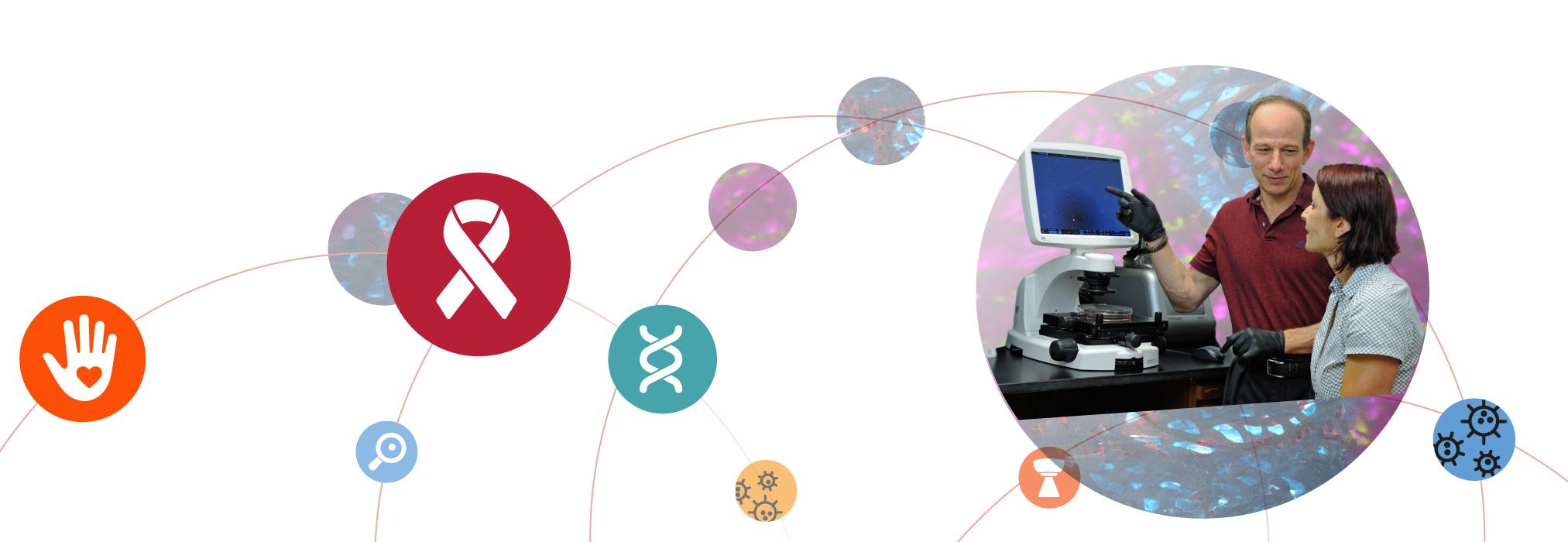Connecting The Dots
By John Tibbetts
Research Strives to Solve Complex Cancer Commonality Puzzle
Cancer can be unpredictable. That’s why Gregg Fields, Ph.D., is researching how bone cells are tricked into allowing some types of cancer to invade the skeleton and rapidly take over. For example, multiple myeloma and breast cancer cells are known to penetrate bone tissue and metastasize. “We have discovered therapeutic compounds that we know can slow down or stop metastasis in bone from these cancers,” said Fields, the executive director of FAU’s Institute for Human Health and Disease Intervention (I-HEALTH) and professor in the Department of Chemistry and Biochemistry. “But mechanisms of these therapies are not well understood.”
In a National Cancer Institute–funded study, Fields is collaborating with Conor C. Lynch, an associate member of the Moffitt Cancer Center, to learn how multiple myeloma and breast cancer cells take advantage of unexpected assistance from healthy bone cells. One question is exactly how metastatic cancer cells communicate with normal bone cells to prepare for and carry out their invasion. The study potentially could help scientists identify new therapeutic targets.
Tumor cells take advantage of normal activities by two types of healthy bone cells. Osteoclast bone cells naturally dig holes in bones. Osteoblast bone cells, by contrast, fill in those holes. In healthy bones, these processes are in balance.
Myeloma and breast tumor cells produce and release a type of enzyme known as a protease. The protease throws off the balance between osteoclasts and osteoblasts by cutting up proteins produced by osteoblasts. This cutting-up process results in overactivity by the hole-making osteoclasts, increasing the amount of bone that is being degraded. Tumor cells then could invade through new holes in the bone.
“We think we have found the protease that is responsible for this process, chewing up osteoblast proteins,” Fields said. “We’ve developed some very good chemical compounds designed to block its activity. We’ve tested those compounds in animal models and found indeed that they are blocking this protease. We just don’t know how the protease functions in this process, and we actually don’t know all of the proteins that are being chewed up. But we have enough preclinical data to show there is something mportant here.” The researchers will measure protease production in human breast cancer cell lines and myeloma cell lines when placed near osteoblasts. The team will also work to identify which proteins are damaged by the protease.
“The protease is clearly acting on proteins, but we don’t know which ones are important. When a protease cleaves a protein, are the products from that protein the ones that enhance the activity of the osteoclast and allows the tumor cells to invade? We feel there is a common mechanism in both multiple myeloma and breast cancers,” he said. “If these complex puzzles could be solved, researchers could design more targeted therapeutic agents for both multiple myeloma and breast cancer metastasis.”
If you would like more information, please contact us at dorcommunications@fau.edu.
